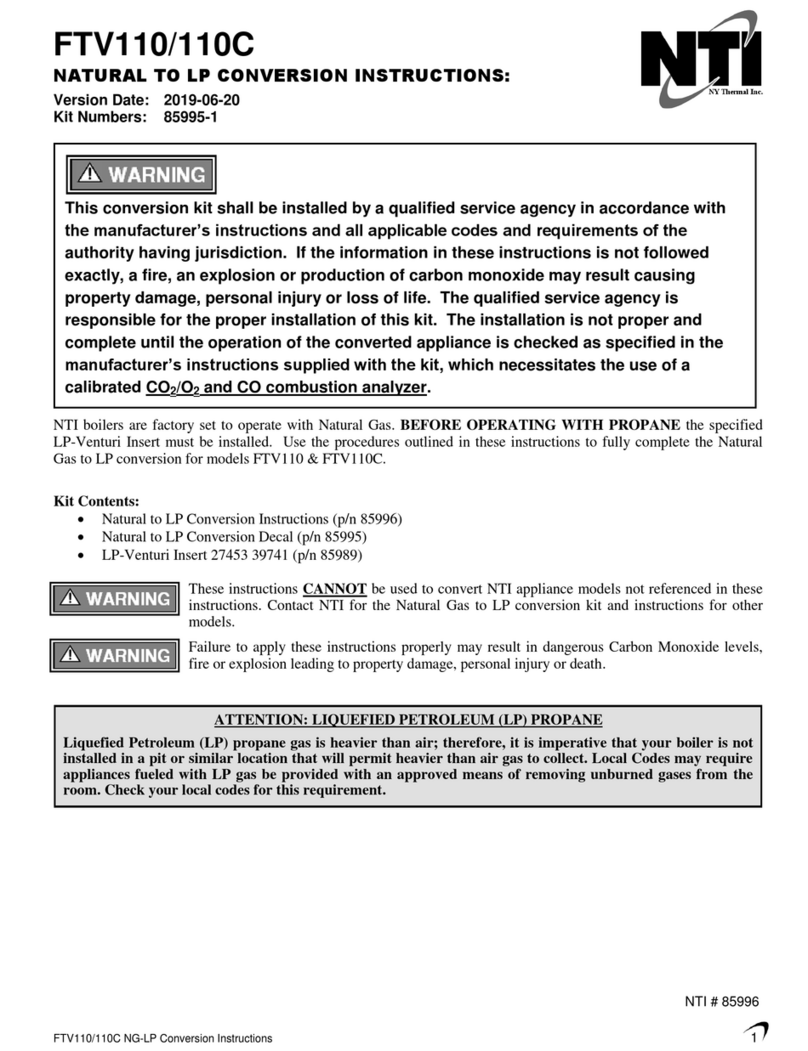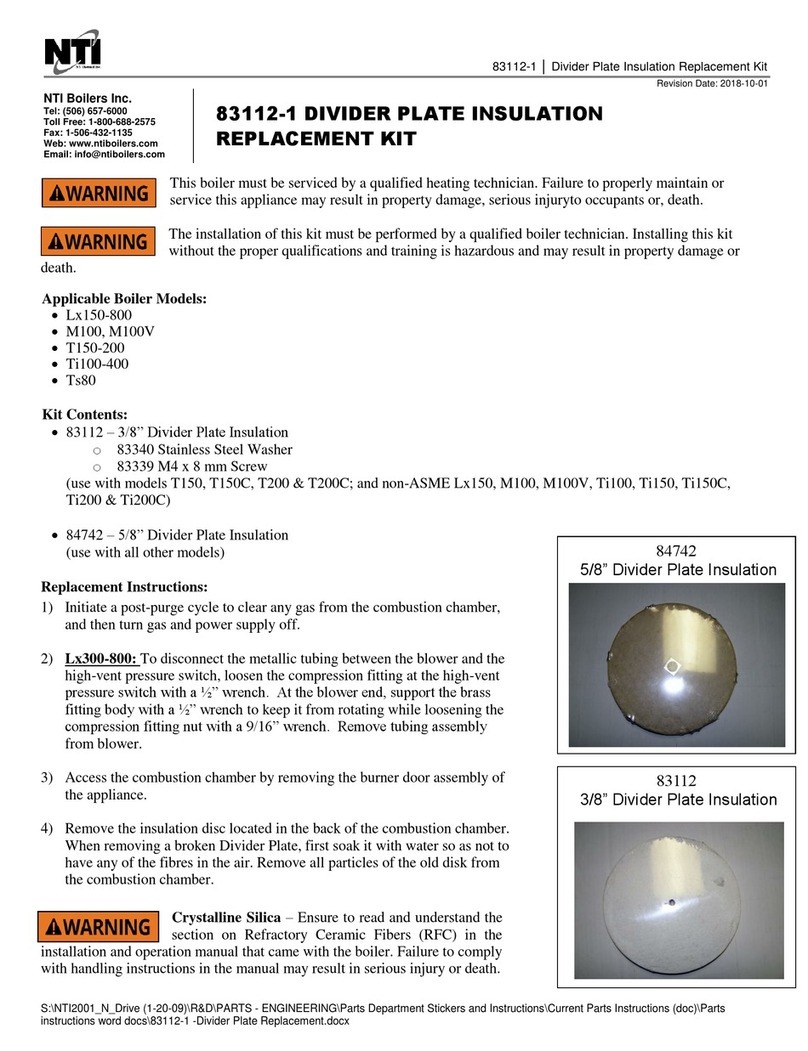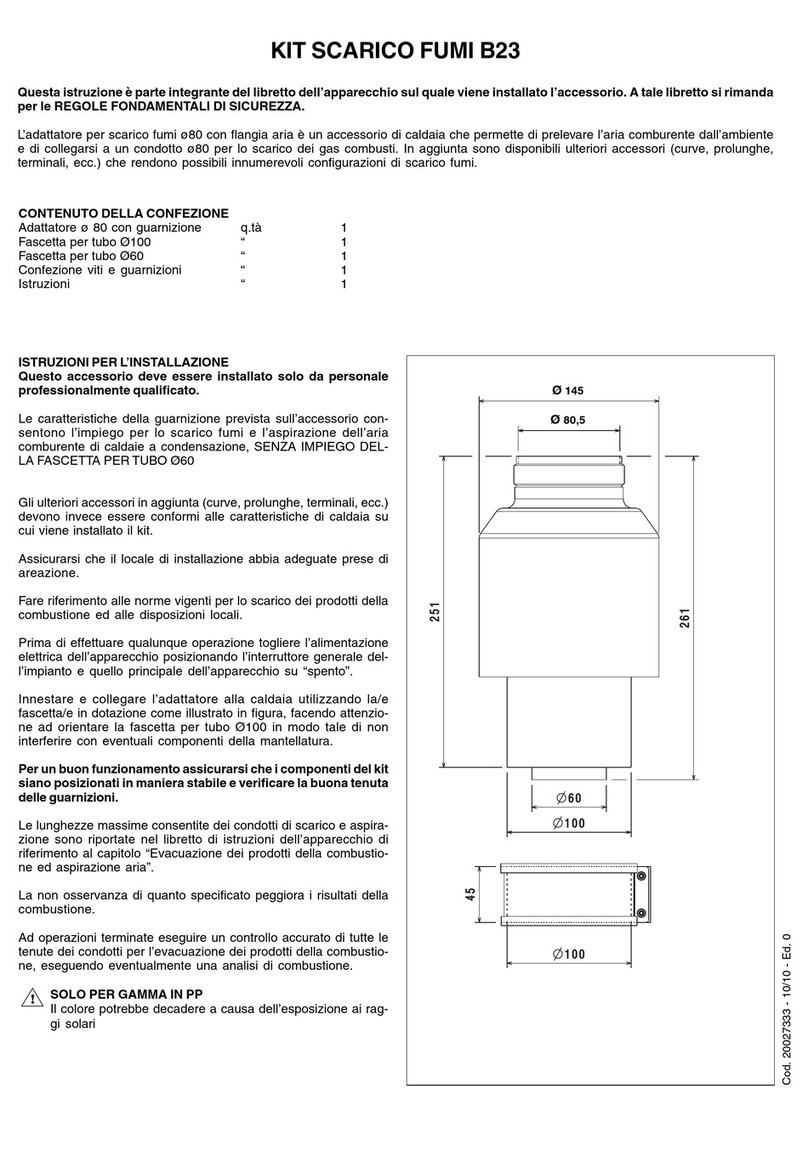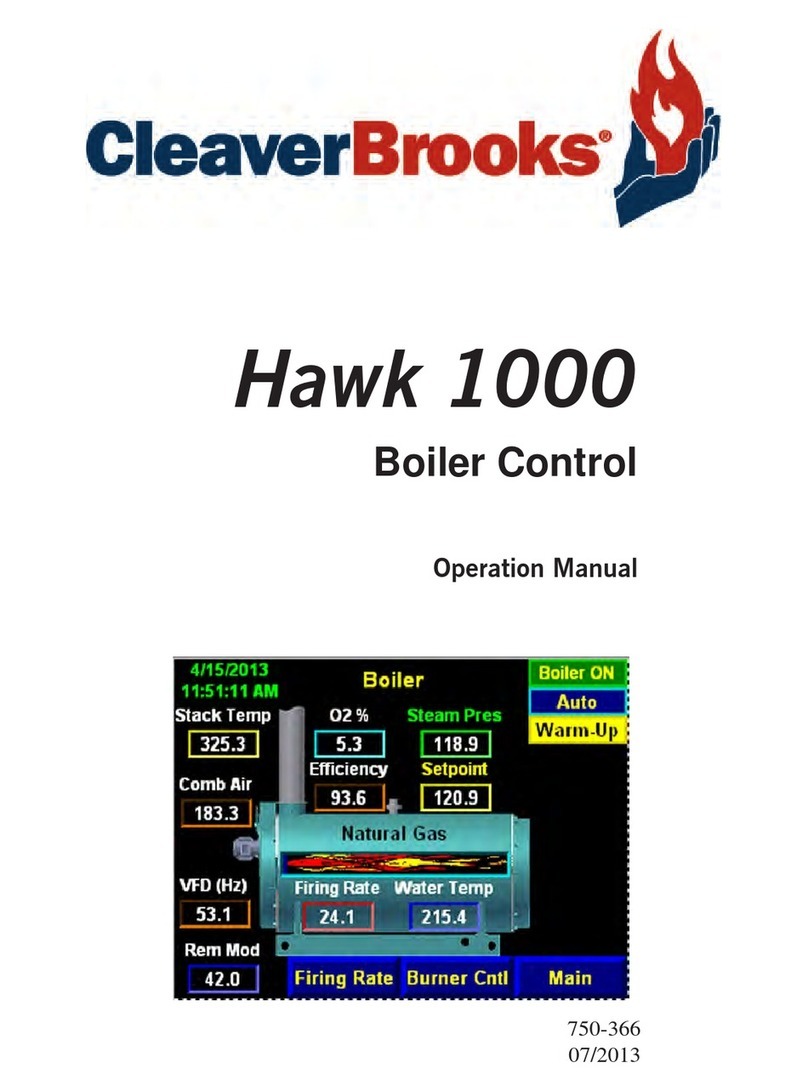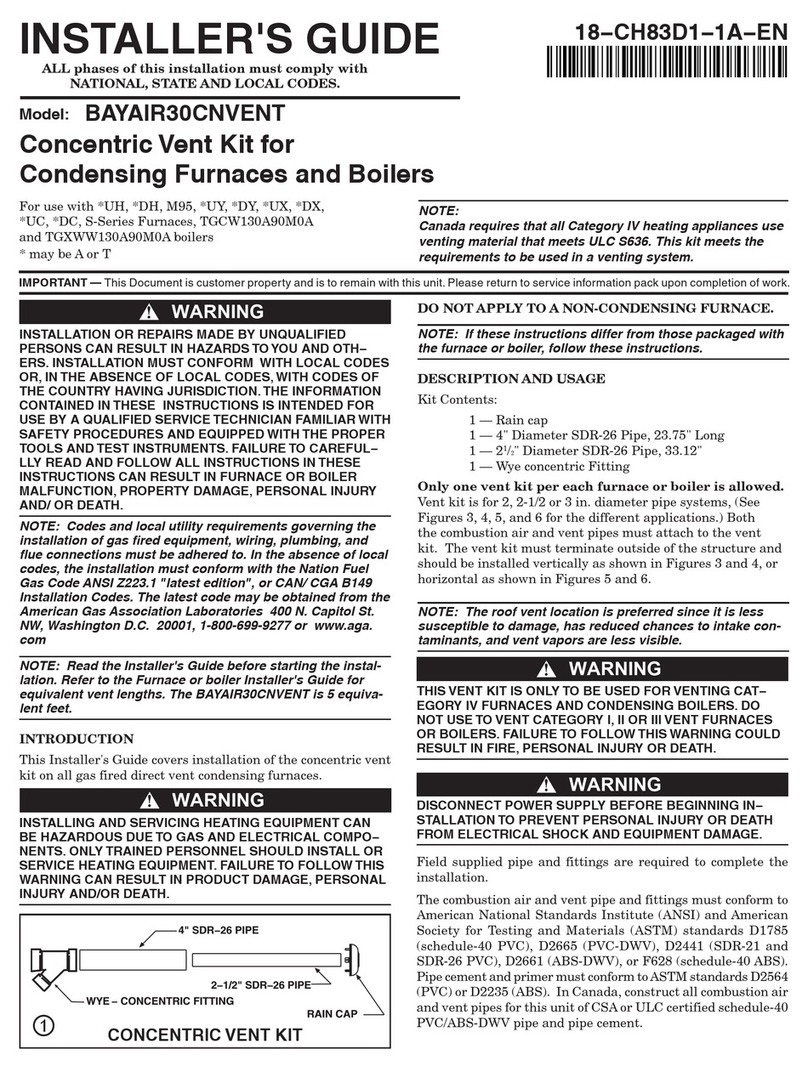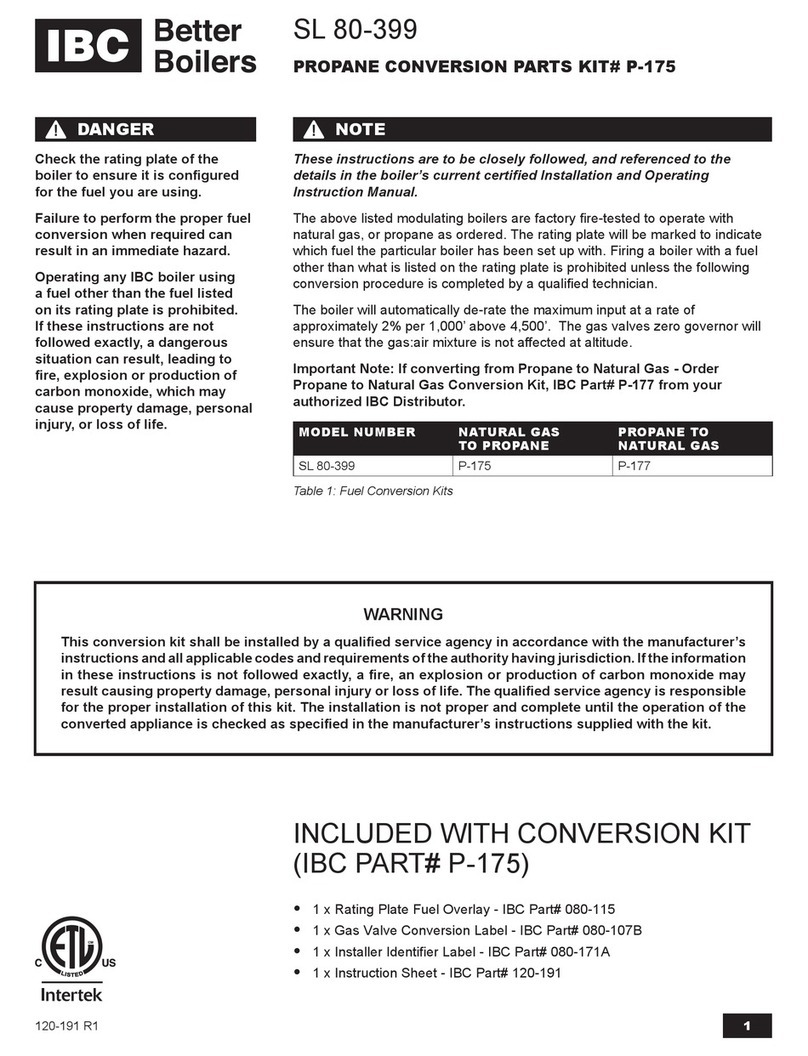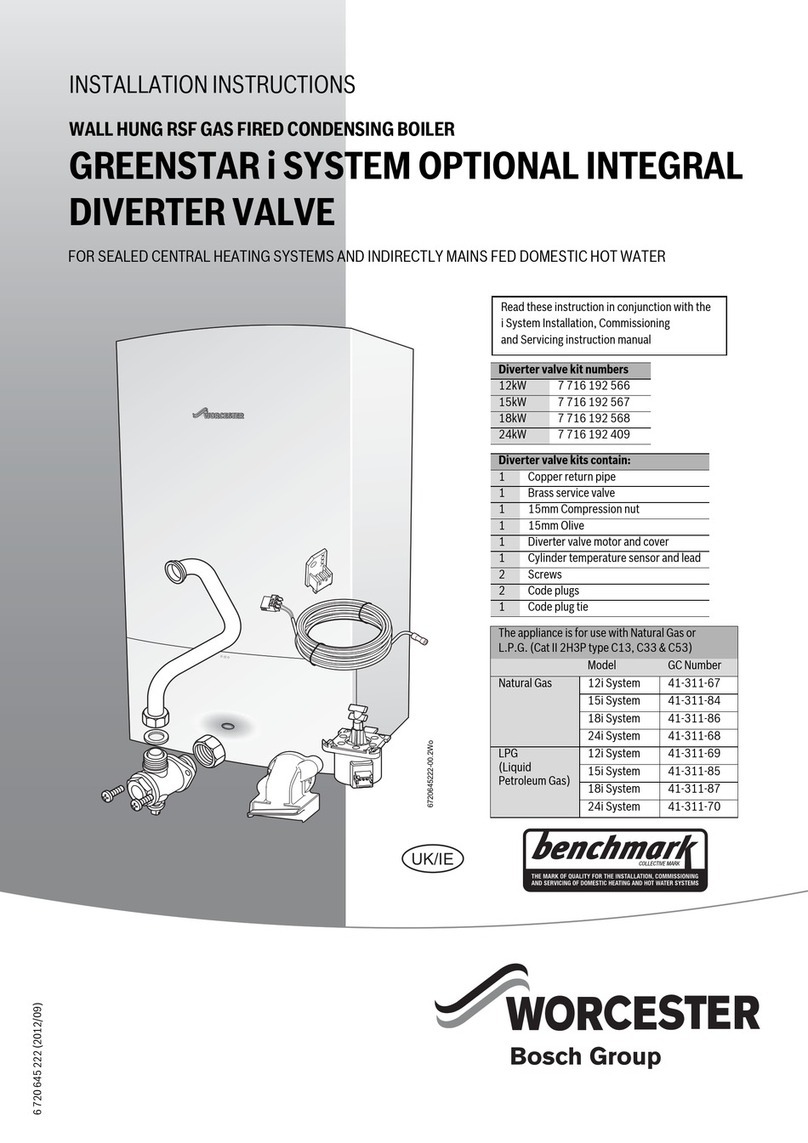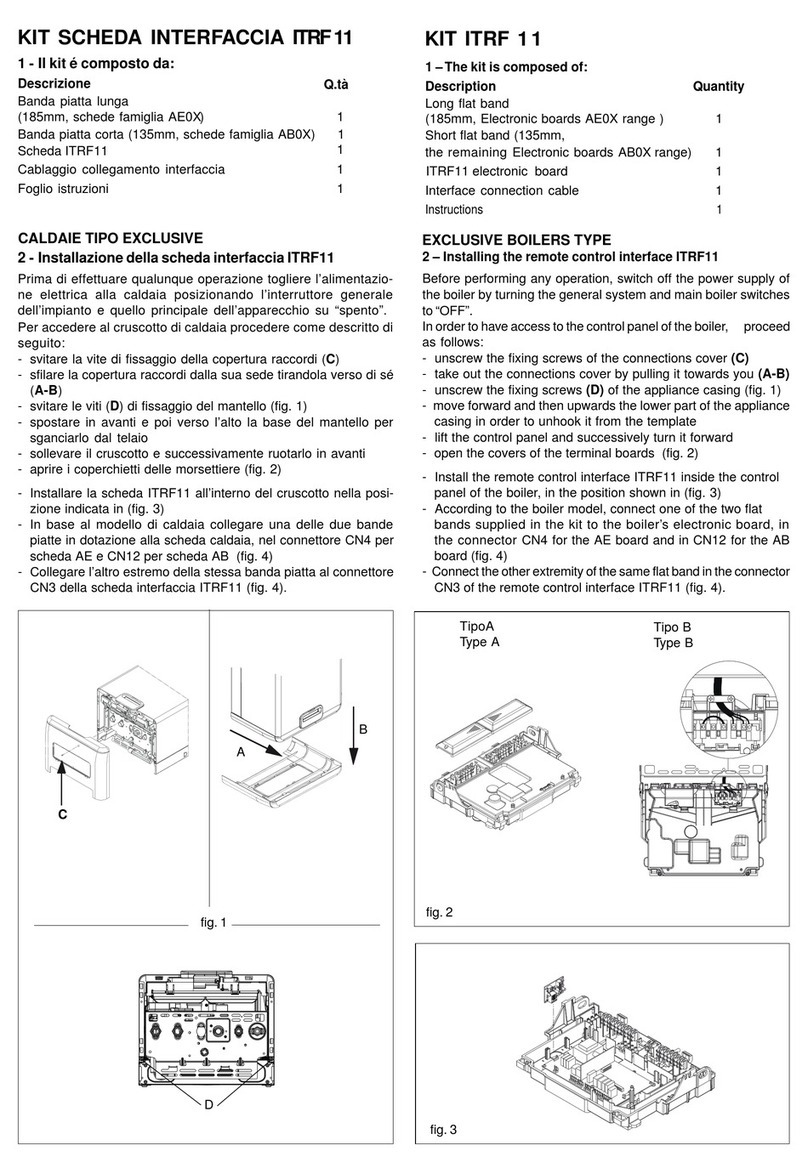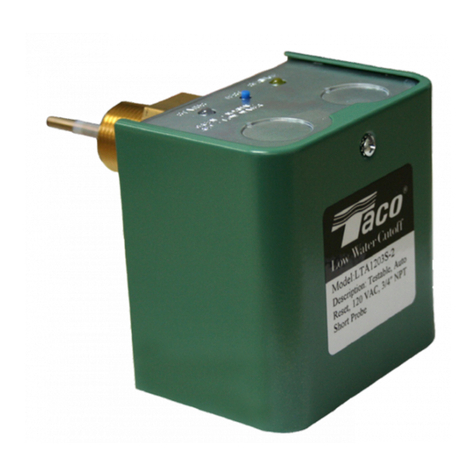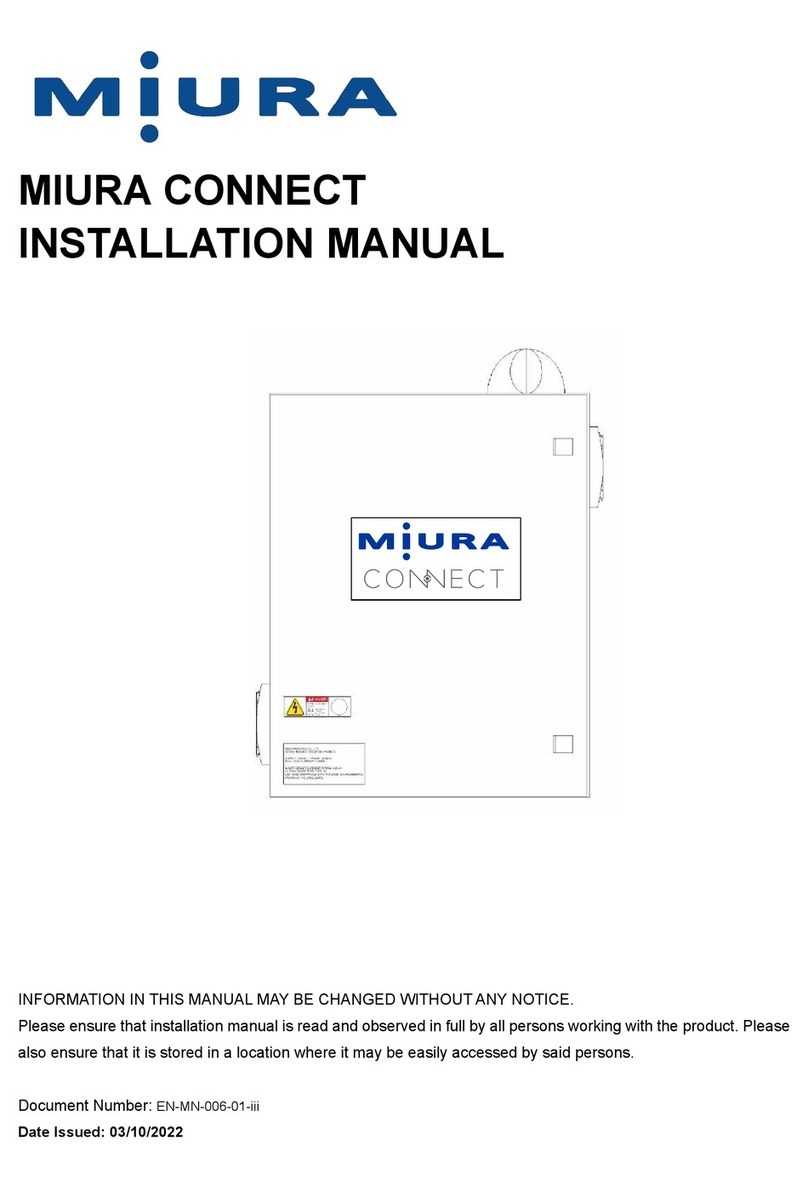NTI 85002 User manual

#
Installation Instructions 85002 │Gas Valve 120Vrac VK4115
Revision Date: 2019-06-19
S:\NTI2001_N_Drive (1-20-09)\R&D\PARTS - ENGINEERING\Parts Department Stickers and Instructions\Current Parts Instructions (doc)\Parts
instructions word docs\85002 instructions - Gas Valve 120Vrac VK4115.doc
NTI Boilers Inc.
Tel: (506) 657-6000
Toll Free: 1-800-688-2575
Fax: 1-506-432-1135
Web: www.ntiboilers.com
Email: info@ntiboilers.com
85002
Gas Valve 120Vrac VK4115
Applicable Appliance Models
Tx200, Tx200C
Kit Contents
85002 –Gas Valve
83134 –Regulator Adapter
Tools Required
Pipe Wrench (for gas line)
Adjustable Wrench (for gas line union)
5/16” Nut Driver
Phillips #2 and #1 Screwdriver
Flat Screwdriver
Torx T25 Screwdriver
Torx T40 Screwdriver
Combustion Analyzer
The installation of this gas valve must be performed by a qualified gas technician in accordance
with these instructions. Installing this valve without the proper background and training is
hazardous and may result in property damage serious injury or death.
Replacement Instructions
1) Shut off the power and gas supply to the boiler.
2) Remove the gas supply line from the gas valve.
3) Remove the gas valve harness and feedback tube from the gas valve.
4) Remove the screws securing the gas valve to the Venturi (T25) and remove the gas valve from the boiler.
5) Transfer gas line inlet adapter to the new valve. Use care to ensure that the O-ring gasket does not fall out.
O-ring –Failure to properly re-intstall the gas line adapter O-ring will result in gas leakage
which may cause property damage, serious injury, or death.
6) Transfer gas valve outlet gasket to the replacement gas valve. Propane (LP): if equipped with an LP orifice, reinstall
it in the outlet of the new gas valve (see Figure 2).
7) Reinstall the new valve in the reverse order and perform the Combustion Calibration Procedure detailed on the
following pages.
Feedback Tube –Reconnect the tubing from the air-inlet to the gas valve feedback port.
Failure to properly reconnect the feedback tube will negate the boiler’s blocked vent safety
shutoff mechanizm, and could lead to incorrect combustion resulting in property damage,
serious injury or death.
Figure 1 Gas Valve
83134 Regulator
Adapter installed

Installation Instructions 85002 │Gas Valve 120Vrac VK4115
| 2
Figure 2 - Gas Valve Outlet Gasket (LP-orifice)
Combustion Calibration Procedure
To calibrate burner combustion, perform the following procedure using a calibrated combustion analyzer capable of
measuring CO2and CO from a Natural Gas or Propane burning appliance:
1. Set analyzer to the appropriate fuel (Natural Gas or Propane).
2. Gas Line Pressure Test –monitor gas line pressure throughout all combustion tests and verify it is maintained
within tolerance. See Gas Line Pressure Test below.
3. Set Throttle Screw –operate burner to the maximum modulation rate (see Table 2); set combustion according to
Table 1 using the Throttle Screw; allow time for the analyzer readings to stabilize between adjustments –record
CO2value. See Throttle Screw Adjustment below.
4. Set Offset Screw –operate burner to the minimum modulation rate (see Table 2); using the Offset Screw, set the
CO2to 0.4-0.8% lower than the value obtained during the maximum modulation rate test (e.g. if CO2at Max =
9.5%, then CO2at Min must = 8.8-9.1%). See Offset Screw Adjustment below.
Combustion Calibration is mandatory upon installation and during each annual service.
Failure to perform the Combustion Calibration in accordance with these instructions may result
in incorrect combustion leading to burner damage or excessive Carbon Monoxide concentrations
causing property damage, personal injury or death.
Carbon Monoxide - Never leave the unit operating while producing Carbon Monoxide (CO)
concentrations in excess of 175 ppm. Failure to follow this warning may result in serious injury
or death.
LP-orifice
Outlet Gasket
Propane –install LP-orifice in the
outlet gasket of the gas valve

Installation Instructions 85002 │Gas Valve 120Vrac VK4115
| 3
Throttle Screw Adjustment
The gas valve Throttle Screw (see Figure 3) is used to calibrate the CO2concentration with the burner operating at or
near the maximum modulation rate (see Table 2). Turning the Throttle Screw in (clockwise) decreases the CO2
concentration. Turning the Throttle Screw out (counterclockwise) increases the CO2 concentration. Typical adjustment
required is 0 –1/2of a turn in or out from the factory setting.
NOTE: Calibration of the Throttle Screw should only be performed with the burner operating at or near the
maximum modulation rate (see Table 2).
Adjustments to the Throttle Screw may only be made by a qualified gas technician using a
calibrated combustion analyzer capable of measuring CO2and CO. Adjustments may only be
performed if the gas line pressure is maintained above minimum levels throughout the duration
of the test (see Table 1). Failure to follow these instructions may result in serious injury or death.
Offset Screw Adjustment
The gas valve Offset Screw (see Figure 3) is used to calibrate the CO2offset at minimum modulation vs. maximum
modulation. Turning the Offset Screw in (clockwise) increases the CO2 concentration at minimum modulation rate.
Turning the Offset Screw out (counterclockwise) decreases the CO2 concentration at minimum modulation rate. Typical
adjustment required is 0 - 1/8th of a turn in or out from the factory setting.
NOTE: Calibration of the Offset Screw must only be performed with the burner operating at the minimum
modulation rate (see Table 2).
Adjustments to the Offset Screw may only be made by a qualified gas technician using a
calibrated combustion analyzer capable of measuring CO2and CO, and only with the burner at
the minimum modulation rate (see Table 2). Attempting to set the Offset Screw while the burner
is operating at a modulation rate other than the minimum will result in incorrect combustion and
may lead to burner damage or excessive CO.
Gas Line Pressure Test
The boiler gas valve is equipped with a line pressure test port; see Figure 3. Use the following procedure to measure the
gas line pressure to the boiler to ensure it falls within the range given in Table 1:
1. Turn the supply of gas to the boiler off.
2. Open the bleed screw of the line pressure test port approximately 1-1/2 turns. This port is directly connected to the
gas line feeding the boiler. See Figure 3.
3. Force 1/4ID tubing over the housing of the line pressure test port; install the other end of the tubing to an
appropriate line pressure test gauge or manometer. Ensure both ends of the tubing make a tight connection.
4. Open the supply of gas to the boiler and check for gas leaks.
5. Observe the line pressure under static conditions and compare it to Table 1. The pressure will be greatest under
static conditions.
6. With all other gas appliances in the application running, operate the burner to the maximum firing rate (See Table 2)
and compare the observed line pressure with Table 1. The pressure will be lowest during the maximum flow of gas.
7. Adjust the gas line pressure to ensure the parameters in Table 1 are attained under all conditions. If possible adjust
the line pressure to the "Nominal/Desired" value listed in Table 1, while the unit is operating at the maximum
modulation rate, see Table 2.
8. Continue observing the gas line pressure until the completion of the combustion analyses, in case adjustments need
to be made.
9. Complete pressure testing, and then return the bleed screw of the Line Pressure Test Port to the closed position.
The line pressure is a function of the gas supply and is affected solely by field provided
parameters such as line size and regulator settings. Under no circumstances can the boiler gas
valve influence or be used to adjust the gas line pressure.

Installation Instructions 85002 │Gas Valve 120Vrac VK4115
| 4
Failure to close the bleed screw of the Line Pressure Test Port will cause a severe leakage of gas,
resulting in a fire or explosion causing property damage, serious injury or death.
Table 1 Line Pressure and Combustion Parameters
Gas
Line Pressure (inches w.c.)
CO2(%)
CO (ppm)
Max.
Nominal/Desired
Min.
Max.
Min.
Max.
Natural
7
4
10.5
9.0
9.8
175
Propane
11
8
13
10.0
10.8
175
Notes:
1Combustion calibration must only be performed with the burner operating at maximum modulation rate; when tested at
minimum modulation rate the CO2must be 0.4-0.8% lower than CO2at maximum modulation rate.
Table 2 Minimum and Maximum Modulation Rates
Model
Min. Modulation Rate (RPM)
Max. Modulation Rate (RPM)
Tx200
1000
7300
Tx200C
1100
6650
Note: Use Installer Menu setting 2-15 to force the burner to operate at the max. (2-15 =
3) and min. (2-15 = 1) modulation rates; see Section 17.0 DISPLAY MENU GUIDE.
Figure 3 Gas Valve and Venturi Assembly
Gas Valve
Venturi
Throttle Screw –used to calibrate
combustion at max. modulation rate
Offset Screw –used to set
combustion at min. modulation rate;
must remove cap first
(use T40 Torx hex wrench)
Line Pressure Test Port
This manual suits for next models
1
Table of contents
Other NTI Boiler Supplies manuals
Popular Boiler Supplies manuals by other brands

PAW
PAW HeatBloC K36 Installation and operation instructions
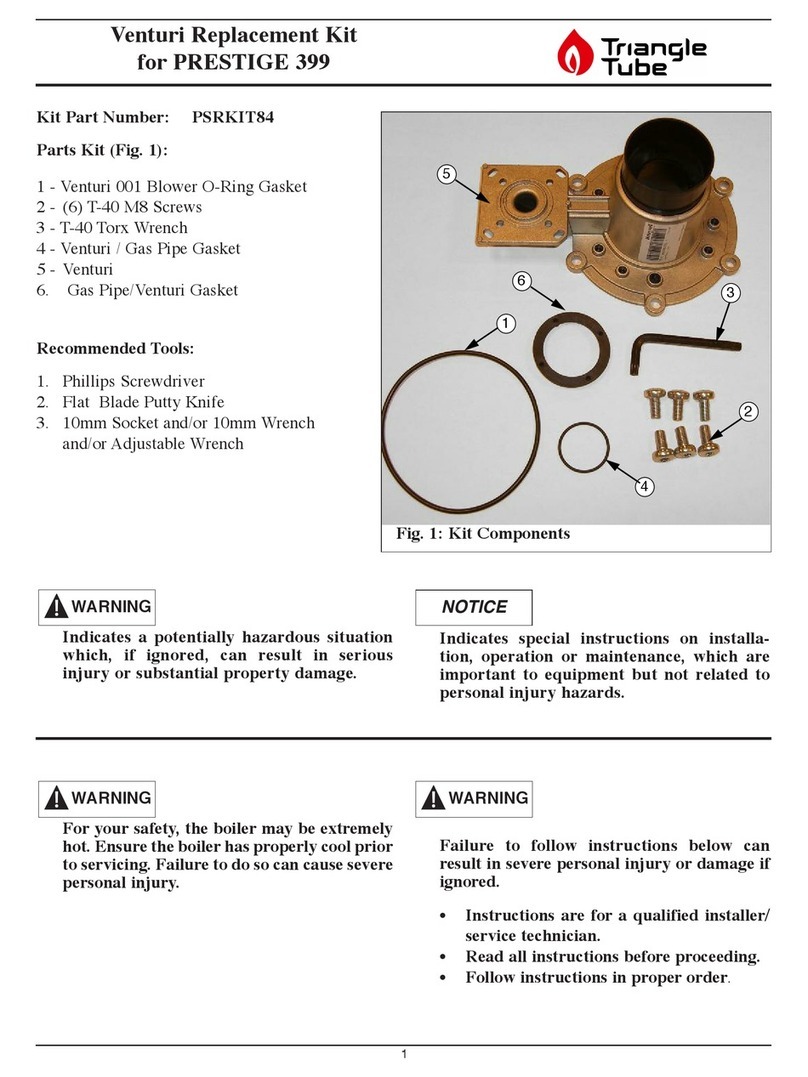
TriangleTube
TriangleTube PSRKIT84 manual
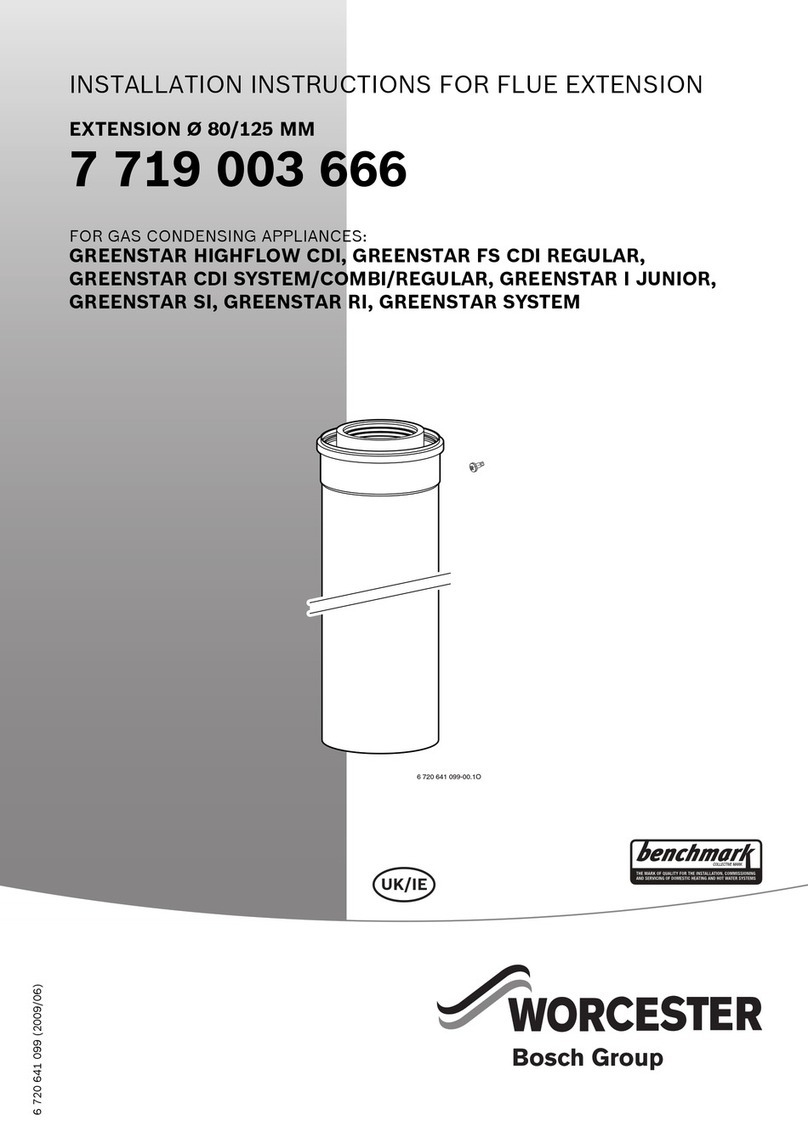
Bosch
Bosch Worcester installation instructions
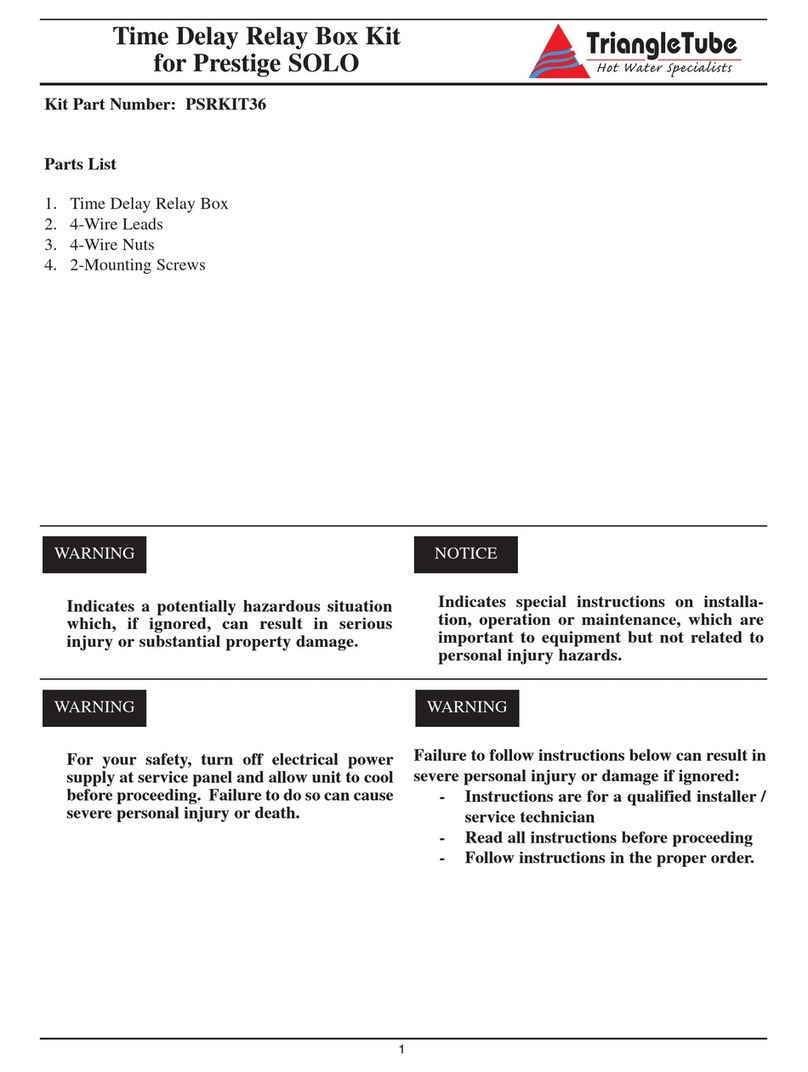
TriangleTube
TriangleTube PSRKIT36 instructions

De Dietrich Thermique
De Dietrich Thermique AD252 Assembly instructions

Bryan Boilers
Bryan Boilers CFS-15-20-20D Specification sheet
